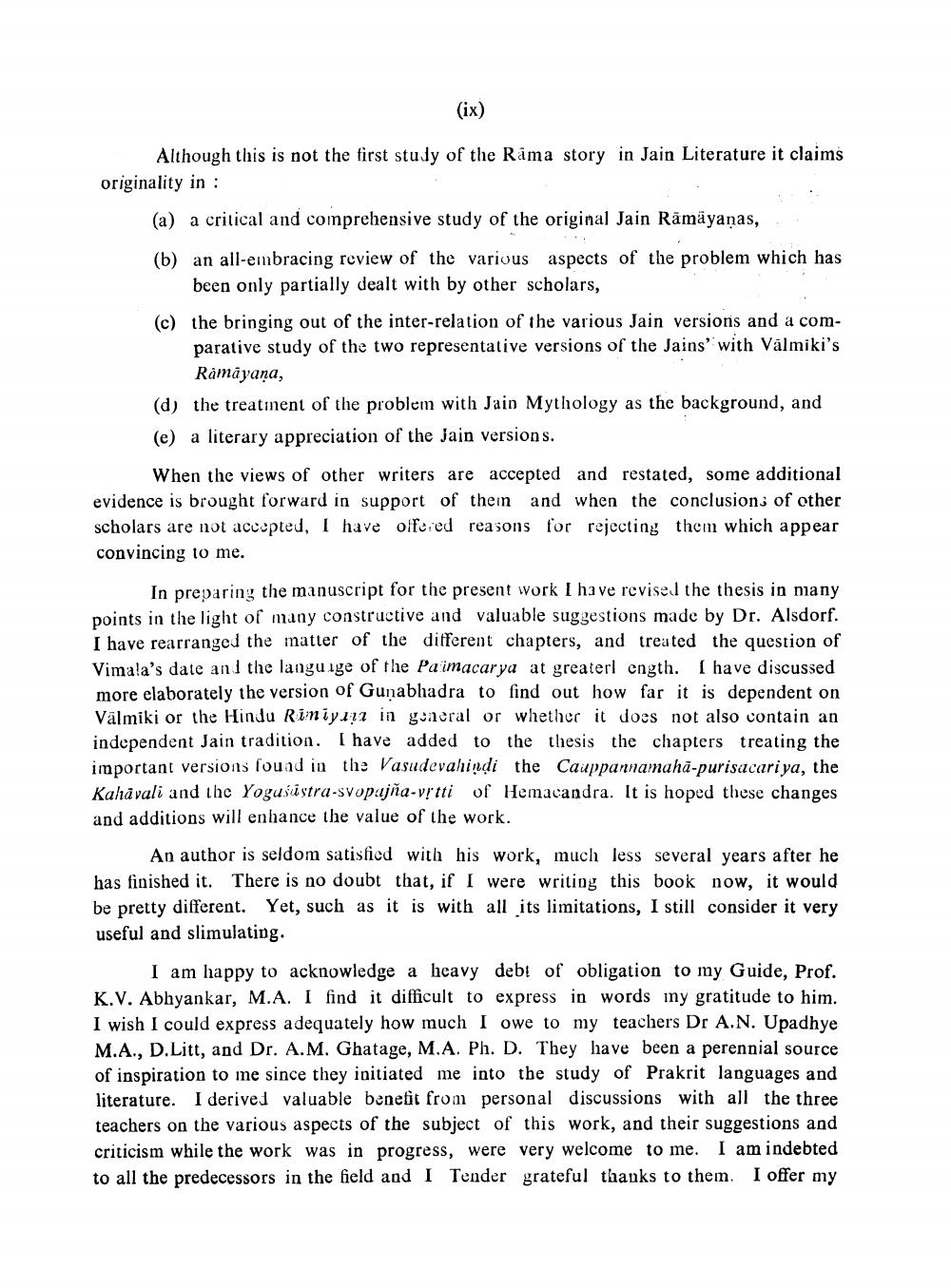________________
(ix)
Although this is not the first study of the Rāma story in Jain Literature it claims originality in :
(a) a critical and comprehensive study of the original Jain Rāmāyaṇas, (b) an all-embracing review of the various aspects of the problem which has
been only partially dealt with by other scholars, (c) the bringing out of the inter-relation of the various Jain versions and a com
parative study of the two representative versions of the Jains' with Valmiki's
Ramayana, (d) the treatment of the problem with Jain Mythology as the background, and (e) a literary appreciation of the Jain versions.
When the views of other writers are accepted and restated, some additional evidence is brought forward in support of them and when the conclusions of other scholars are not accepted, I have offered reasons for rejecting them which appear convincing to me.
In preparing the manuscript for the present work I have revised the thesis in many points in the light of many constructive and valuable suggestions made by Dr. Alsdorf. I have rearranged the matter of the different chapters, and treated the question of Vimala's date an i the languige of the Pa imacarya at greaterl ength. I have discussed more elaborately the version of Gunabhadra to find out how far it is dependent on Vālmiki or the Hindu Riniyari in general or whether it does not also contain an independent Jain tradition. I have added to the thesis the chapters treating the important versions found in the Vasudevahindi the Cauppannamaha-purisacariya, the Kahávali and the Yoguśīstra-svopajña-vrtti of Hemacandra. It is hoped these changes and additions will enhance the value of the work.
An author is seldom satisfied with his work, much less several years after he has finished it. There is no doubt that, if I were writing this book now, it would be pretty different. Yet, such as it is with all its limitations, I still consider it very useful and slimulating.
I am happy to acknowledge a heavy debt of obligation to my Guide, Prof. K.V. Abhyankar, M.A. I find it difficult to express in words iny gratitude to him. I wish I could express adequately how much I owe to my teachers Dr A.N. Upadhye M.A., D.Litt, and Dr. A.M. Ghatage, M.A. Ph. D. They have been a perennial source of inspiration to me since they initiated me into the study of Prakrit languages and literature. I derived valuable benefit from personal discussions with all the three teachers on the various aspects of the subject of this work, and their suggestions and criticism while the work was in progress, were very welcome to me. I am indebted to all the predecessors in the field and I Tender grateful thanks to them. I offer my




